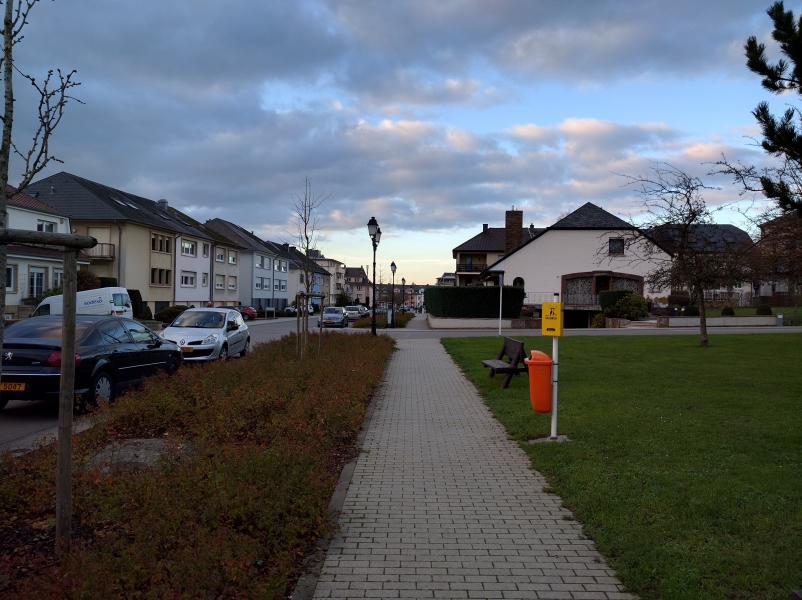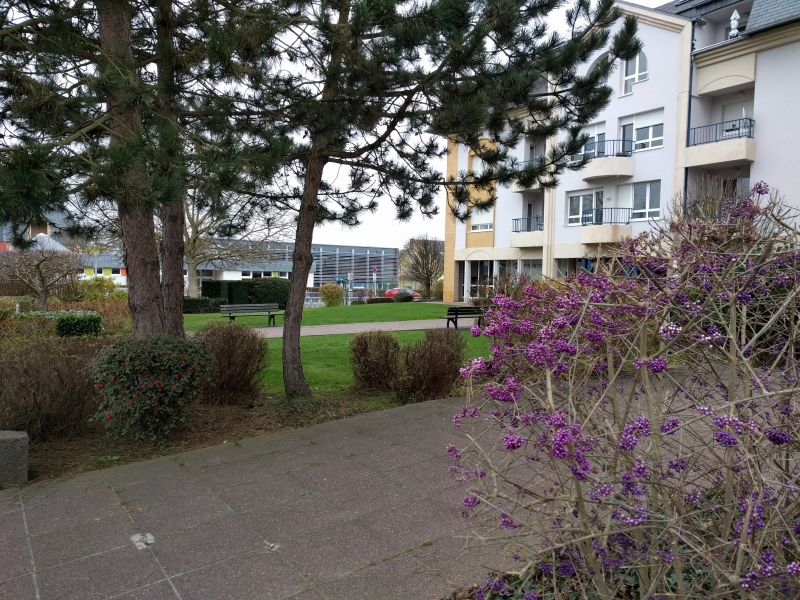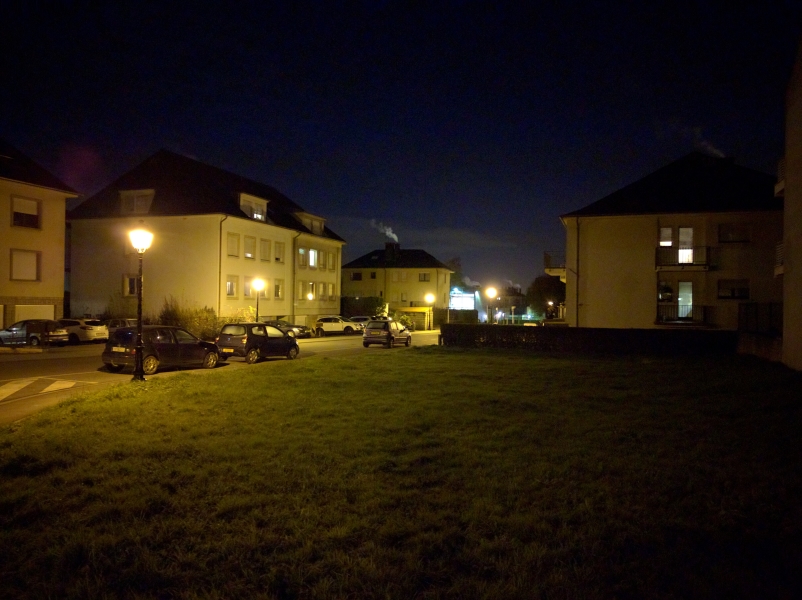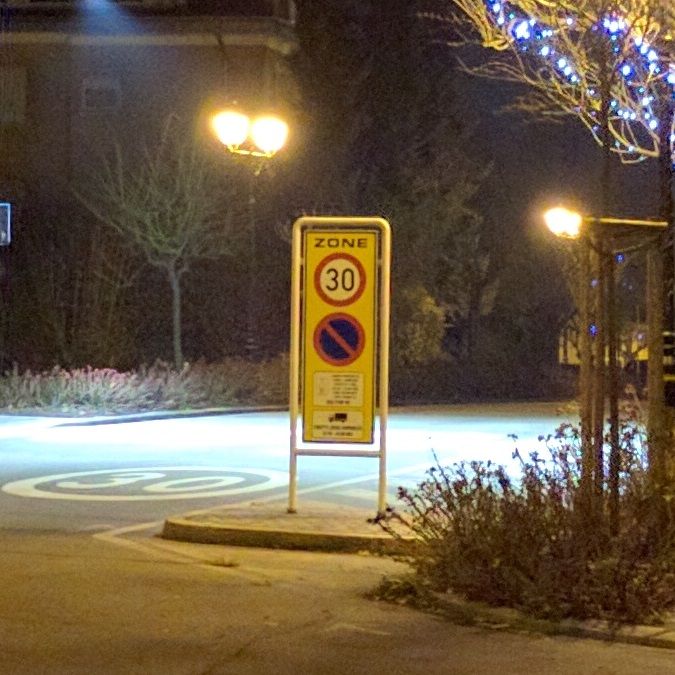The Google Nexus 6P Review
by Andrei Frumusanu on December 16, 2015 8:00 AM ESTCamera Still Picture
The Nexus 6P employs the same camera as the Nexus 5X, which is to say that it's a Sony IMX377 sensor module. The system stands out from other smartphone cameras due to the large 1.55µm pixel pitch, enabling more light collection for each pixel as the area is greater than that of today’s more standard 1.12µm pixel sensors. The module is a 4:3 format sensor able of 12.34MP, enabling still image capture up to resolutions of 4032 x 3024.
We’ve already looked at the details of the camera system in the review of the Nexus 5X, and with the exception of an added video stabilization for 1080p recording, the Nexus 6P shares all other characteristics of the Nexus 5X’s camera. This also includes similar camera focus and shot latencies. As Brandon mentioned in the Nexus 5X review, the device’s shot latency was rather disappointing and this is unfortunately also true for the Nexus 6P, a characteristic that is especially notable in the camera’s HDR+ mode which we’ll come to see as an indispensable feature to get good quality pictures out of the Nexus 6P.
Day-time photography
We compare the Nexus 6P against the leading cameras from Huawei, LG and Samsung. What we’re looking for in these scenes is how the camera is able to perform in terms of exposure and colour balance. The day I chose to take the sample pictures was semi-cloud covered with sun shining through at times, providing lighting conditions that were excellent to test out the device’s HDR modes at the fullest extent and thus presented a more challenging scenario than on a usual more sunny or cloud-covered day.
What I noticed off the bat is that the Nexus 6P seems to produce much darker pictures compared to those of LG or Samsung’s phones. The SDR mode has a hard time dealing with the bright sky in all three scenes, consistently underexposing the important parts of the scenes. What seems to be interesting is that the 6P seems to provide very similar colour palettes to that of the Mate S, so it’s possible that Huawei employs similar calibration methodologies for the two devices. The G4 and S6 are much better at reproducing the lighting conditions at the time, and are able to output brighter images. It’s especially on greenery that the 6P (and the Mate S) seem to be particularly dark.
Switching over to HDR+ mode, the Nexus 6P varies in its processing depending on the scene. What seems to be common is that the overall exposure still seems to remain too dark. In the second scene (Viewable in the gallery), the 6P actually manages to blow up the lightning through the clouds instead of increasing the luminosity of the rest of scene. The grass though gets a very noticeable improvement in detail. Even though HDR+ is able to provide improvements throughout the scenes, they’re seemingly not enough to achieve the superior exposure and colour balance of competing cameras from LG and Samsung, and in some cases even Huawei’s own Mate S.
Moving on to a scenario where we can analyse the camera’s performance in resolving details, we start to see the strengths of the camera sensor’s increased pixel size. First of all we again see that the 6P is able to produce darker details than competing devices, and oddly enough HDR+ makes the scene even darker which is a pity.
In SDR mode the Nexus 6P has an exceptional lead over the competition when it comes to picture sharpness. Even though competing devices sport high resolution sensors, it’s the 6P that seems to be able to provide the best special resolution out of all devices. Only the S6 comes near to the detail to the 6P in some parts of the image but loses in other parts.
Switching over to HDR(+), the 6P improves clarity on some surfaces. It’s also the only device able to discern details of the background clouds in this scene.
Overall, I was a bit disappointed by the Nexus 6P’s daylight performance. On the plus side, the camera was able to provide outstanding detail with less pixel crosstalk than past devices, effectively eliminating any resolution disadvantage it has, as the 1.55µm pixel sensor is able to provide similar effective spacial resolution to higher resolution sensors. There were also considerable downsides encountered, as it seems that the processing was consistently underexposing images in almost all scenarios tested. Both LG and Samsung’s cameras were able to provide better colour-balance, as the Nexus 6P seemed to veer too much towards cooler temperatures. HDR+ improves on most of the scenarios but is also much less consistent than true sensor-based HDR processing as found on the LG’s or Samsung’s sensors.
Night-time photography
Moving on to night-time photography scenes, we see some concerning performance out of the SDR mode of the Nexus 6P. It seems that the Nexus 6P mirrors the experience we had with the Nexus 5X: Even though the image sensor’s increased pixel pitch is able to capture more light than similar sensors, the lack of OIS still forces the 6P to take comparatively short exposures to be able to avoid blurriness due to device shaking.
In the first scene we see the drastic differences between the 6P’s SDR vs HDR+ modes. If I had been subjected to a blind-test between the two shots, I would have said that they’re taken on two different devices. The SDR shot a relative mess with extremely high noise. In fact, when checking the EXIF data it looks like this shot was done at 1/15s exposure with an extremely high ISO of 3762, over double the maximum the other devices reach.
The HDR+ mode in turn transforms the rather low quality shot in something quite different. Noise has significantly gone down. The EXIF data tells us the shot was done at 1/13 exposure with ISO-1919. Google’s software processing is also able to improve colour rendition, although it brings some weird effects with itself such as the oversaturated grass or a much bluer sky than found in the SDR shot or the other devices. All test shots I took of the 6P exhibited blending together of the large lit up horizontal window blinds in the far background building, something none of the other devices had issues with. I’m not sure if this is a sensor or a processing issue, but both the SDR and the HDR+ shots had the problem.
In the second scene we see a repeat of the large SDR/HDR+ differences. This shot was also bright enough for all devices to not use heavy ISP processing, enabling the G4 and S6 to expose their detailed EXIF settings, which gives us a better impression of how the large pixel pitch affects exposure and ISO settings:
| Device | Exposure | ISO |
| Google Nexus 6P | 1/14s (0.071s) | 2236 |
| Huawei Mate S | 1/13s (0.076s) | 1000 |
| LG G4 | 1/10s (0.10s) | 1850 |
| Samsung Galaxy S6 | 1/9s (0.11s) | 1000 |
The Nexus 6P is able to offer the fastest exposure but needs to trade off higher ISO to achieve similar amounts of luminosity as the other devices. Again it’s the HDR+ mode which comes to the rescue as the software processing is able to remove very large amounts of noise from the picture and brighten up the scene, making it an absolute no-brainer when deciding on which shooting mode to use in dark scenarios. Though the HDR+ mode seems to yet again bring with it some slight discrepancies such as vastly oversaturating the blue Christmas lights on the trees. Nevertheless, the Nexus 6P here manages the overall best shot among the tested devices as it’s best able to maintain detail while reducing noise levels.
Looking at a 100% crop of the same area between the best shots of all devices it looks like the 6P is offering the best compromise of detail and noise reduction. The G4 actually seems to perform similarly in terms of light sensitivity of objects and offers the clearest edge resolution of objects, but it loses out in low-contrast areas due to seemingly more aggressive noise reduction that smoothens out details too much.
Overall the Nexus 6P’s camera is able to trade blows with the best of the best among Android devices. I find Google’s choice to go with an unconventional sensor configuration quite bold, an in theory it should have paid off. One area we can be certain that it pays off in terms of sheer quality of detail in daylight photography. The night-time scenes are more of a double-edged sword because of the lack of OIS, here what ends up being the big differentiator is the processing done by the HDR+ mode.
Google’s shooting mode brings with itself some clear draw-backs such as very long shooting times of up to 1.5s, many times higher than competing devices, but it’s also able to provide some of the best results in some of the scenes. The emphasis is on some of the scenes – as consistency is something that the Nexus device still falls a bit behind on. It’s definitely on the tough daylight shots that I found the Nexus 6P lacking due to its repeated failure to expose properly.
In the end, even though there are some processing issues, the Nexus 6P’s camera is a high-end performer that will be able to satisfy most users, and it should present a definite improvement over past Nexus device’s camera performance.
Video Performance
Video performance is one area where we expect the Nexus 6P to surpass the Nexus 5X thanks to the Snapdragon 810’s more advanced ISP. The Nexus 5X suffered from a complete lack of video stabilization features making for very shaky recording. The 6P can record video at 720p, 1080p and 2160p (4K), of which only the two former modes can take advantage of EIS (Electronic Image Stabilization).
Nexus 6P - 1080p30
When I went out recording the sample videos, at first I didn’t notice anything wrong with the Nexus 6P. This was the same semi-sunny, semi-cloud-covered day as presented in the still image samples. It’s only when checking the videos back on my desktop is when I noticed something must be very wrong. The videos recorded were absolutely horrible as almost everything in the scene was vastly under-exposed.

Nexus 6P - 1080p30 - Raw video still frame
Unfortunately it seems YouTube does some gamma adjustments to the upload, so it doesn’t correctly convey the severity of the issue, so I captured a still frame of the raw video in the image above to better show the issue. It seems like the Nexus 6P was trying to expose for the bright sky and subsequently turned down exposure for the rest of the scene. This has a very harsh impact as many details are simply lost in the darkness; for example it’s impossible to discern much details at all in the bushes around the lamp-post.
The 2160p recording of the same scene exhibited the same issues which baffled me, so I had to go and investigate several possible theories, one of them even leading me to think I may have missed some HDR video format that the 6P is capable of.
Nexus 6P - 1080p30 - Take 2
Fortunately when reshooting the same route on a different day with less hard lighting conditions the Nexus 6P seems to have performed much better. This leads me to believe that the issue was again a fundamental flaw in the way that the device treats exposure in situations with large variations in lighting. Given that the first scenario was a very typical afternoon day it leaves me with some large concerns as to how the phone behaves in a repeated scenario. Unfortunately due to winter and repeated cloud-cover I haven't been able to re-test it since.
At 1080p the Nexus 6P is able to perform very well otherwise. Detail is maintained even with usage of EIS, which by the way does its job well enough.
Nexus 6P - 2160p30
At 2160p/4K the device suffers a lot from lack of any kind of stabilization. While the video performance is outstanding and the amount of details for each frame is excellent, one would have to keep very still and steady to be able to provide a good video experience. What we can also notice on the 6P that wasn’t present on the 5X is the much shallower field of view that 1080p+EIS has to make due with caused by cropping of the raw 4K video input of the camera sensor captures.
The video is recorded in AVC Baseline@5.1 with 17Mbps bitrate for 1080p video and 42Mbps for 2160p video. While in past reviews I was always impressed with Huawei devices’ audio recording quality the Nexus 6P disappoints as it only offers a single mono AAC 48KHz 96Kbps audio track, something most likely due to the fact that the device only has a single back-facing microphone and both communication microphones are facing forwards instead of sideways, thus unable to be used properly for stereo audio recording.

































219 Comments
View All Comments
TheinsanegamerN - Monday, December 21, 2015 - link
Because, as we all know, a 1440p or 4k screen is required to make aphone usable. there is NO WAY a 1080p screen will be enough for a 5.5" device. Also, I can see atoms at the molecular level.even the 6s at 768p or whatever it is looks just fine. the colors look great, the screen is bright, and a higher rez screen would have destroyed battery life.
tacomonstrous - Wednesday, December 16, 2015 - link
Regarding ergonomics, it is disingenuous for the reviewer to assume that an arrangement he personally finds inconvenient is so for everybody. I have small hands and for me it's much easier to reach the back button on the left than the recents on the right. Most of the time my thumb is hovering right above the back button, while I have to shift my grip to reach the recents button. And I'm right handed in my phone use.zeeBomb - Wednesday, December 16, 2015 - link
Damn it. It always have to be when anandtech have to drop a surprise review like that...aijazz - Friday, December 18, 2015 - link
same here, i was about to order my nexus 6p the same day this review came ! and now am scratching my head !!maskofwraith - Wednesday, December 16, 2015 - link
i like how they exclude iphone from camera comparisons.V900 - Wednesday, December 16, 2015 - link
Sorry to burst your bubble there, but the exclusion isn't because the iPhone has a worse camera, but for readability's sake.Besides, everybody already knows that the camera in the iPhone 6/6s is among the best on the market.
Look up the iPhone 6s review, where Anandtech point out how all the flagship phones have amazing cameras these days.
Samsung Galaxy 6/iPhone 6s/LG4 and now Nexus 5X/6P are roughly speaking equal in terms of quality. The Android phones occasionally have a small edge in certain situations like low light shots, and the iPhone takes the lead in terms of speed and post-processing.
twizzlebizzle22 - Wednesday, December 16, 2015 - link
My androbench scores are pulled in much higher results.Fancy telling me some of the settings to replicate the result?
SirCanealot - Wednesday, December 16, 2015 - link
Another fantastic review, Andrei! As usual, you made reading technical details fun, informative and easy. Thanks for your hard work! :)SHartman1976 - Wednesday, December 16, 2015 - link
I generally enjoyed the review, but there were a couple of really odd parts. First off, claiming that the position of the volume and power buttons was "unusual" is odd, since it was used on the Nexus 6 and the entire Moto X family, so it's hardly unusual at this point for Nexus and Nexus-like phones. The lowered position on the side is also similar to last years Nexus 6, and is intended to facilitate reaching them on such a large phone. I'm not saying that's good or bad, but it's hardly surprising at this point.I was also surprised by his critique of the stock Android navigation buttons as it read to me like something more than personal preference. In particular referencing thumb-length makes it read as if this is an objective problem, when it simply reflects preferences in device handling. I'm a right-handed user with average length thumbs, and when using the larger Nexus 6 I either hold the phone in my left hand while interacting with the right (2 handed use) and have no issue reaching anywhere on the screen, or I use it one-handed in my left hand, putting the phone in the crux of my fingers and operating it with my left thumb, which puts the back button in the best possible location (right next to my thumb!). Of course personal grip and use preferences vary, but the review reads as if this is an actual flaw, rather than a capricious bit of personal use habit.
Finally, in the photo section it's unclear to me whether the reviewer realized that exposure is set by tapping on the part of the image you want to expose for (e.g. a house or grass rather than the sky). Since this is also how focus is set it's almost unavoidable indoors, but if you don't bother in an outdoor shot because focus is effectively infinite then you are not telling the phone what to expose for, which naturally can result in an exposure different than intended. Was that done and the phone still was unable to properly expose the scene? That would truly be a problem, but it's not clear from the review whether that was done, and as a prospective buyer I'd really want to know (I'd also want to know so as to reconcile this report with other reviews of the camera, which don't describe this issue).
Don't get me wrong, there were many edifying parts in the review, in particular the excellent work on screen efficiency. But a couple portions left me wanting either more data, or a better separation between opinion and objective critique.
nico_mach - Wednesday, December 16, 2015 - link
Yes, I agree. I switched from iphone and I thought the buttons while different were completely intuitive, very little adjustment time. But I've never used a Samsung and the reviewer is clearly using that as a reference point, which is reasonable I guess.